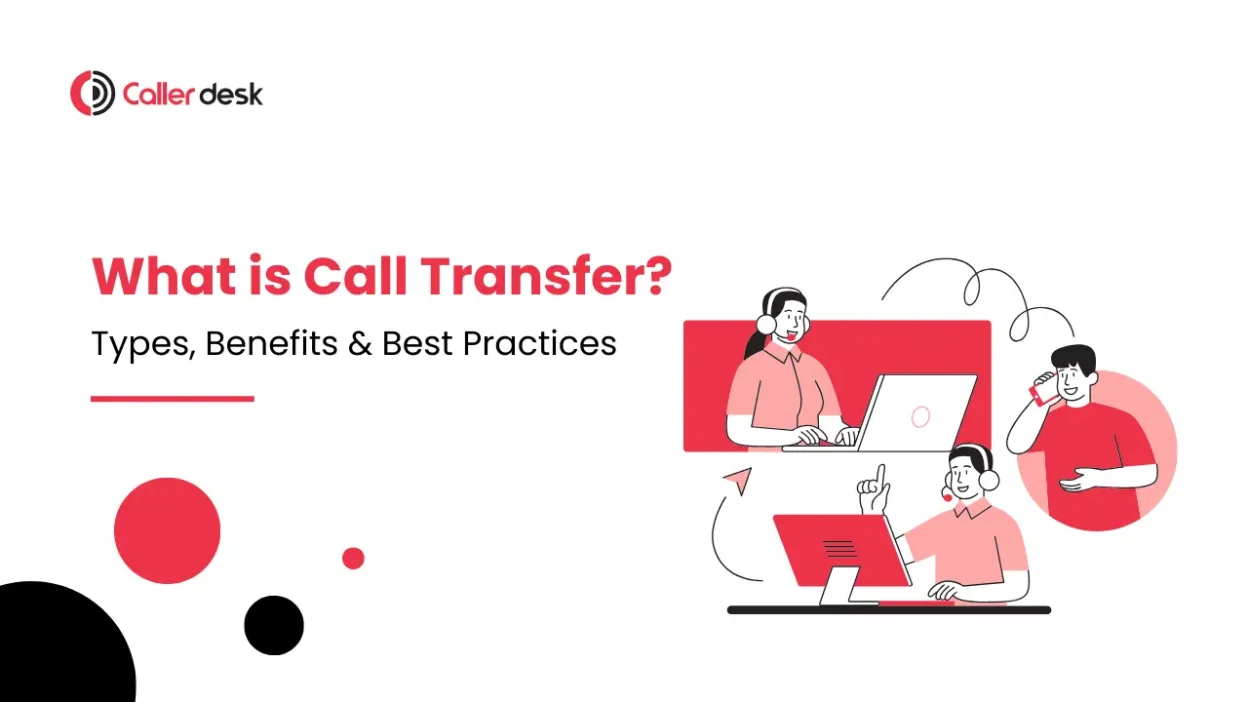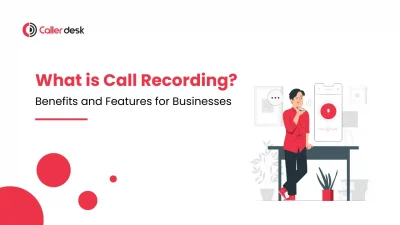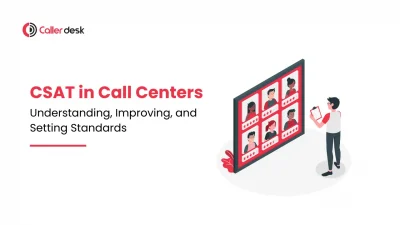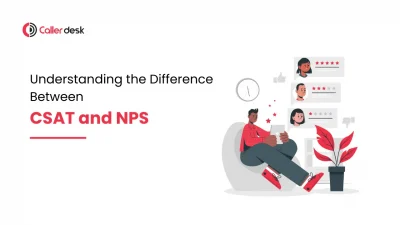Have you ever wondered how your call gets smoothly directed to the right person without much hassle? That’s the magic of call transfer. This crucial feature in cloud telephony allows calls to be effortlessly redirected from one person to another, enhancing both customer service and operational efficiency. Think about the last time you called a company and were immediately connected to the exact person who could help you – that’s call transfer working perfectly.
In this blog, we’ll dive into what call transfer is, its different types, the benefits it offers, and best practices to ensure your business communications are always seamless and efficient.
What is Call Transfer?
Call transfer, also known as call forwarding, is when you redirect a phone call to another number. This could be another phone, voicemail, or even an answering service. The primary goal is to ensure the caller reaches the right person without the frustration of having to hang up and call again.
For example, imagine you call your bank’s main line for technical support. Instead of the receptionist giving you another number to dial, they transfer your call directly to the technical support department. This saves you the trouble of hanging up and dialing a new number, making the entire process smoother and more efficient for you.
Types of Call Transfer
1. Blind Transfer
In a blind transfer, your call is sent to another number without the recipient being informed in advance. It’s quick but can lead to issues if the recipient is unavailable or unaware of the transfer. Think of it as passing a message without checking if the person is ready to receive it.
2. Attended Transfer
An attended transfer involves the call handler speaking with the new recipient before making the transfer.This guarantees that the recipient is ready to take the call, resulting in a smoother experience. It’s like a friendly heads-up before passing on the conversation.
3. Warm Transfer
Similar to an attended transfer, a warm transfer includes a brief conversation between the current handler and the new recipient, ensuring all important information is relayed. This type of transfer is often used in customer service to provide context, making sure you don’t have to repeat yourself.
4. Cold Transfer
A cold transfer is another term for a blind transfer, where the call is transferred without prior communication between the parties. It’s straightforward but can sometimes feel abrupt for the recipient.
What Benefits Does Call Transfer Offer?
Using call transfer in your business offers several benefits:
1. Better Customer Experience
By quickly redirecting calls to the right person or department, customers spend less time waiting and get help faster. Imagine calling customer service and being swiftly connected to the expert who can solve your issue. It’s a relief, right?
2. Increased Efficiency
Call transfer reduces the need for callers to repeat their issues to multiple representatives, saving time and improving overall efficiency. Picture explaining your problem once and getting it resolved without being shuffled around. That’s efficiency at its best.
3. Better Team Collaboration
Team members can easily pass calls to colleagues better suited to handle specific inquiries, promoting teamwork and knowledge sharing. Think of it as having the right person for the right job, every time.
4. Flexibility
Call transfers allow for greater flexibility in handling calls, whether the recipient is in the office, working remotely, or on the go. Imagine being able to get urgent calls no matter where you are – it keeps you connected and responsive.
Best Practices for Call Transfer
To ensure effective and smooth call transfers, follow these best practices:
1. Training and Protocols
Educate Your Team: Ensure all employees are trained on how to handle call transfers. This includes understanding the differences between blind transfers and attended transfers. Think of it as giving your team the tools to make every call a success.
Set Clear Procedures: Have clear and consistent procedures in place for handling call transfers so everyone knows what to do. It’s like having a playbook that everyone follows for smooth operations.
2. Clear Communication
Explain the Transfer: When doing an attended or warm transfer, communicate clearly with both the caller and the recipient. Let the caller know why they are being transferred and provide the recipient with any necessary information. It’s important to keep everyone informed.
Avoid Confusion: Make sure all parties understand the reason for the transfer and what will happen next to avoid any confusion. Clear communication ensures a seamless handoff.
3. Use Technology
Leverage Advanced Tools: Use advanced call management systems and cloud telephony solutions to make the call transfer process smoother and more efficient. Think of it as having the latest tech to keep your communications top-notch.
Enhance Efficiency: Features like call queuing and automated attendants can significantly improve efficiency. These tools keep everything running smoothly, even during peak times.
4. Monitor and Get Feedback
Regularly Review Processes: Regularly check how well call transfers are working. This includes listening to transferred calls and reviewing call logs. It’s like a health check for your communication system.
Collect Feedback: Get feedback from both employees and customers about their experiences with call transfers. Use this information to discover areas for improvement and make any necessary changes. Listening to feedback helps you continually improve.
Conclusion
Call transfer is a vital feature in cloud telephony, offering many benefits such as better customer experience, increased efficiency, and improved team collaboration. By understanding the types of call transfer and following best practices, businesses can ensure smooth and effective communication. Implementing these tactics can help your company create a more consistent and efficient customer experience.
Remember, the key to successful call transfer is making sure every call reaches the right person quickly and smoothly, keeping your customers happy and your operations efficient.





